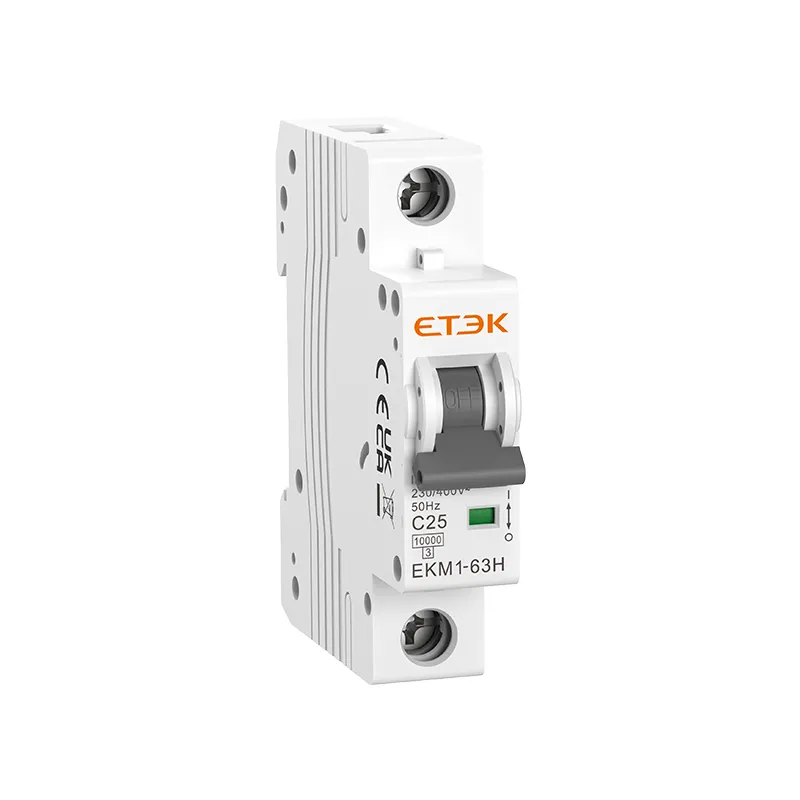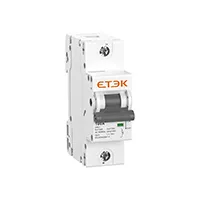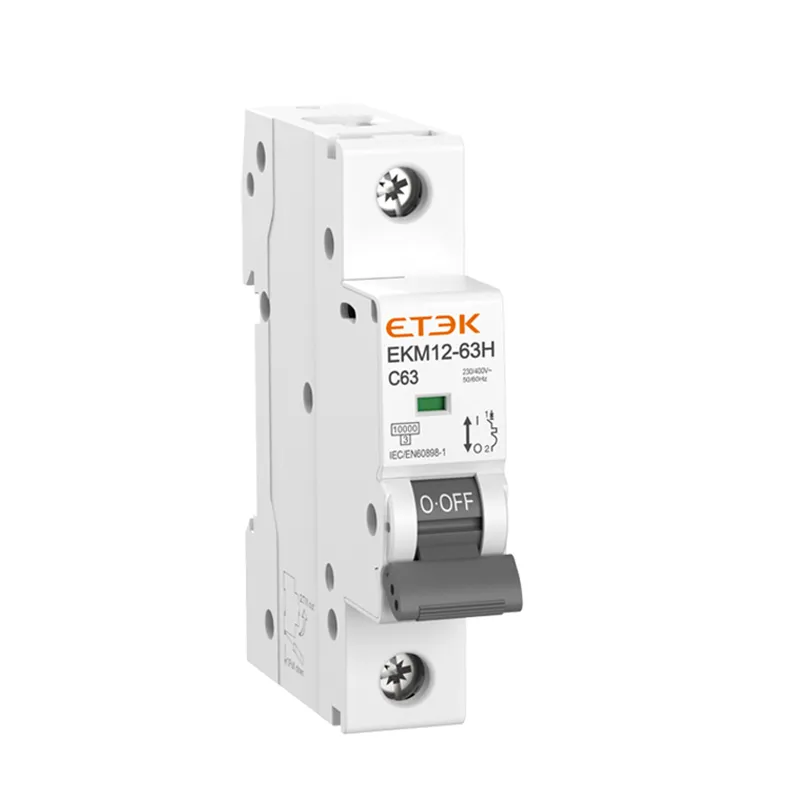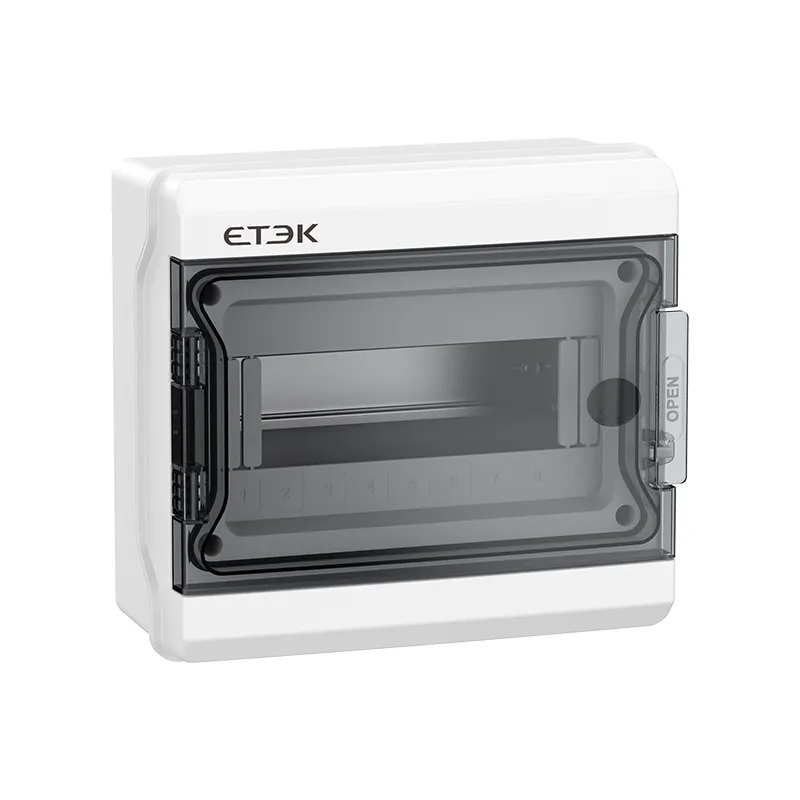How to choose the right Miniature Circuit Breaker for your needs?
When selecting a Miniature Circuit Breaker (MCB), it's essential to remember several key points. Focus on the current and voltage ratings that align with your specific electrical system requirements. Understanding the trip curve type is vital for customizing protection; different applications demand different responses to overloads or short circuits.
Additionally, examine the construction material and features like test buttons or indicator lights, as these enhance usability and monitoring. Remember to consider environmental factors where the breaker will be installed, as they can significantly impact performance and reliability. Lastly, stay compliant with local regulations to ensure safety and effectiveness in your electrical installations.
Understanding the Basics of Miniature Circuit Breakers
A Miniature Circuit Breaker (MCB) is an essential component in modern electrical systems, designed to provide protection against overloads and short circuits. These devices automatically cut off the electrical supply when abnormal conditions are detected, preventing damage to circuits and potential hazards.
Understanding their classifications is important, as MCBs come in various types based on their sensitivity and tripping characteristics. Standard ratings typically range from 0.5A to 125A, allowing users to select an MCB that meets both their operational needs and safety standards. Additionally, familiarity with terms like tripping curve and breaking capacity helps in making informed decisions regarding installation and usage.
By grasping these basics, users can ensure they choose the right MCB to enhance safety and efficiency in their electrical systems.
Essential Factors When Selecting Mini Breakers
When choosing the right miniature circuit breaker, several important factors come into play. First, consider the current rating, which should match the load requirements of your electrical system. This ensures that the breaker can handle expected electrical flow without tripping unnecessarily. It’s essential to select a breaker that is rated for your system’s voltage to avoid potential hazards.
Another critical aspect is the type of trip curve the breaker possesses. Different trip curves respond to overloads and short circuits at varying speeds; understanding these can help in customizing protection according to specific applications. Additionally, consider whether you need a single or double pole breaker, based on how many circuits you wish to protect.
Here’s a quick comparison of key features:
|
Feature |
Description |
Importance |
|
Current Rating |
Must match load requirements |
Prevents unnecessary tripping |
|
Voltage Rating |
Must be suitable for your system |
Ensures safety |
|
Trip Curve Type |
Determines response speed to faults |
Customizes protection |
|
Number of Poles |
1P,2P,3P,4P |
Matches circuit protection needs |
Lastly, always check for compliance with local regulations and standards specific to your region. This not only ensures safety but also enhances reliability within your electrical installation.
Key Features to Look for in Circuit Breakers
When selecting miniature circuit breakers, it's important to consider several key features that can enhance safety and performance.
- Tripping Mechanism: Thermal-magnetic combination for overload and short-circuit protection.
- Rated Current: Matches circuit load requirements to prevent unnecessary tripping.
- Voltage Rating: Clearly labeled to ensure compatibility with electrical systems.
- Environmental Specification: Rated for reliable operation under specific conditions.
- Durable Construction: High-quality materials enhance longevity and performance stability.
Finally, consider whether the circuit breaker has built-in features like a test button or indicator lights that facilitate easier maintenance and monitoring of electrical safety standards.
Top Electrical Safety Tips for Miniature Circuit Breaker Usage
When using miniature circuit breakers, ensuring electrical safety is paramount. Always check the rating of the breaker to match your load requirements, as oversized breakers can result in insufficient protection.
Regularly inspect your circuit breakers for any signs of wear or damage, and consider replacing them if you notice any issues. It’s beneficial to maintain clear access to your electrical panels, allowing for quick intervention during an emergency.
Additionally, avoid overloading circuits; distribute electrical devices evenly across multiple circuits to prevent tripping. Lastly, stay informed about any updates or recalls related to your circuit breakers to enhance safety and efficiency in your electrical systems.
Maximizing Efficiency in Your Electrical Systems with Circuit Breakers
To maximize efficiency, consider the load characteristics of your appliances. MCBs should match the rated current of the devices they safeguard. Overrated MCBs can lead to insufficient protection, while underrated ones may trip unnecessarily, disrupting power supply.
Additionally, look for MCBs with features such as instantaneous trip mechanisms and selective coordination. These features can help manage fault conditions effectively while reducing downtime and potential damage to equipment.
Comparative Analysis of Different Types of Miniature Circuit Breakers
Miniature Circuit Breakers (MCBs) come in various types, each designed for specific applications and electrical requirements.
The main categories include Type B, C, and D. Type B breakers are ideal for residential use, as they trip quickly under overload conditions — perfect for protecting lighting and general circuits. Type C breakers, on the other hand, are suitable for commercial applications where motor loads and inductive loads are present, offering a balance between sensitivity and response time. Type D breakers are designed for heavy-duty applications, tripping at higher current levels, making them suitable for equipment with high inrush currents.
In addition to these types, assessing the breaking capacity is vital. This characteristic defines the maximum fault current the MCB can handle without failing.
It's also important to consider the number of poles needed — single-pole for basic circuits or double-pole for more complex setups. Understanding these differences helps ensure that you select an MCB that not only fits your immediate needs but also enhances overall safety and efficiency in your electrical systems.
How to Ensure the Right Fit for Your Electrical Needs
Start by determining the total load your circuits will need to handle. This includes calculating the amperage for all devices that will be connected. After that, consider the voltage requirements; most mini breakers are rated for either 230/400V, and matching this with your system is essential.
Next, assess the environment in which the breaker will operate. Factors like humidity, temperature fluctuations, and exposure to dust or corrosive substances can affect performance. Additionally, think about any future expansions; choosing a circuit breaker with a higher rating allows room for additional loads in case your electrical needs grow.
Lastly, familiarize yourself with various types of circuit breakers available and their specific features—such as residual current devices (RCDs) for added protection against electrical faults or surge protection options for increased safety during power spikes. Together, these considerations can guide you toward a mini breaker that fits your needs effectively.
Common Mistakes to Avoid When Choosing Mini Circuit Breakers
Selecting the right miniature circuit breaker can be overwhelming, especially with the variety of options available.
-
Load Capacity Neglect: Underestimating required amperage causes safety risks.
-
System Incompatibility: Failing to verify matching specifications with existing wiring.
-
Performance Oversight: Ignoring critical tripping curves and response time for electronics protection.
Lastly, individuals often disregard manufacturer guidance regarding installation and usage; following these instructions can greatly enhance safety and reliability in your electrical systems.
Conclusion
Choosing the right Miniature Circuit Breaker (MCB) is a vital step in ensuring the safety and efficiency of your electrical systems. By considering factors such as current rating, voltage rating, trip curve types, and compliance with local regulations, you can select an MCB tailored to your specific needs.
Act now!
Contact our customer service team for free shopping guides and the latest product catalogs!





.webp)








